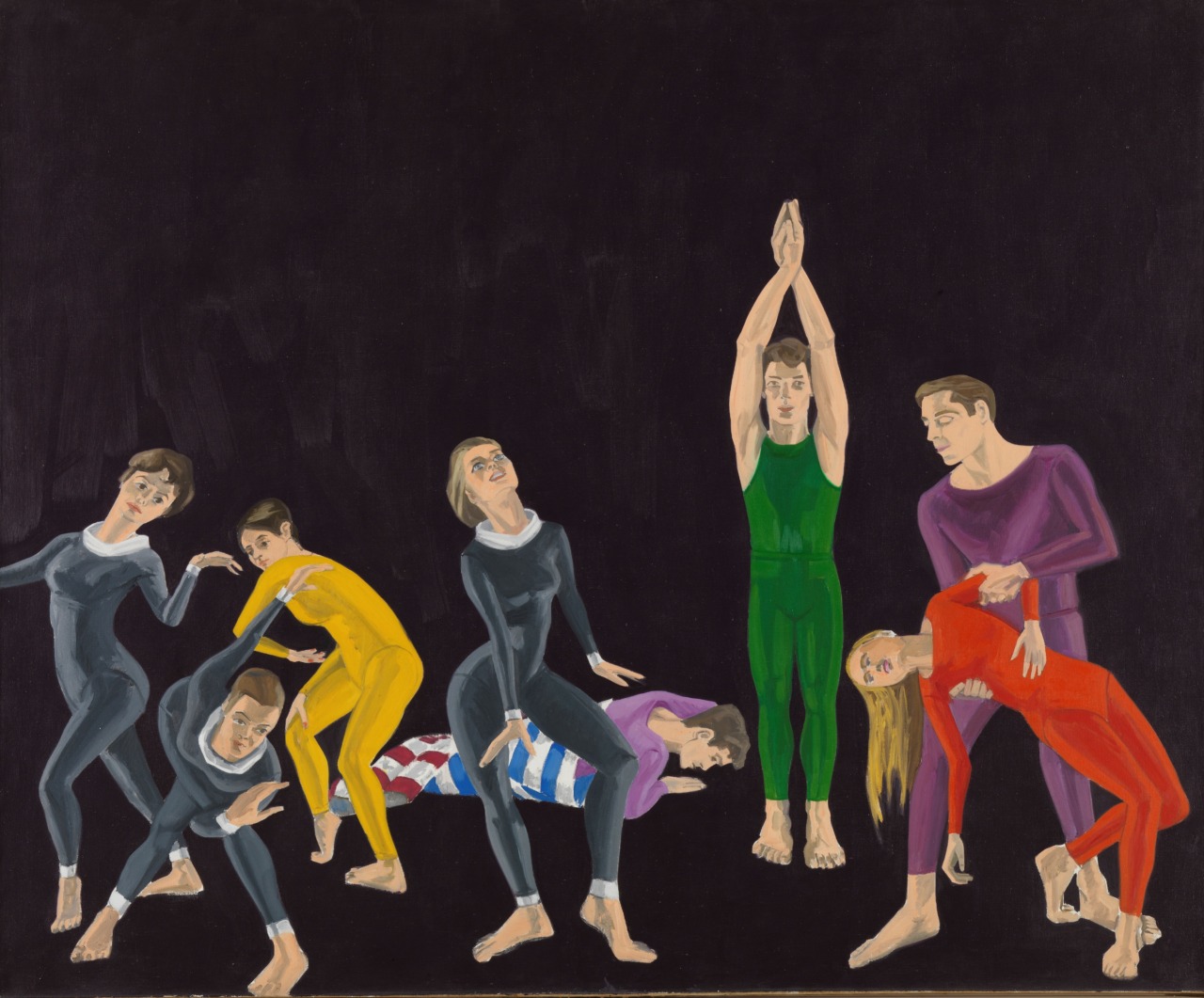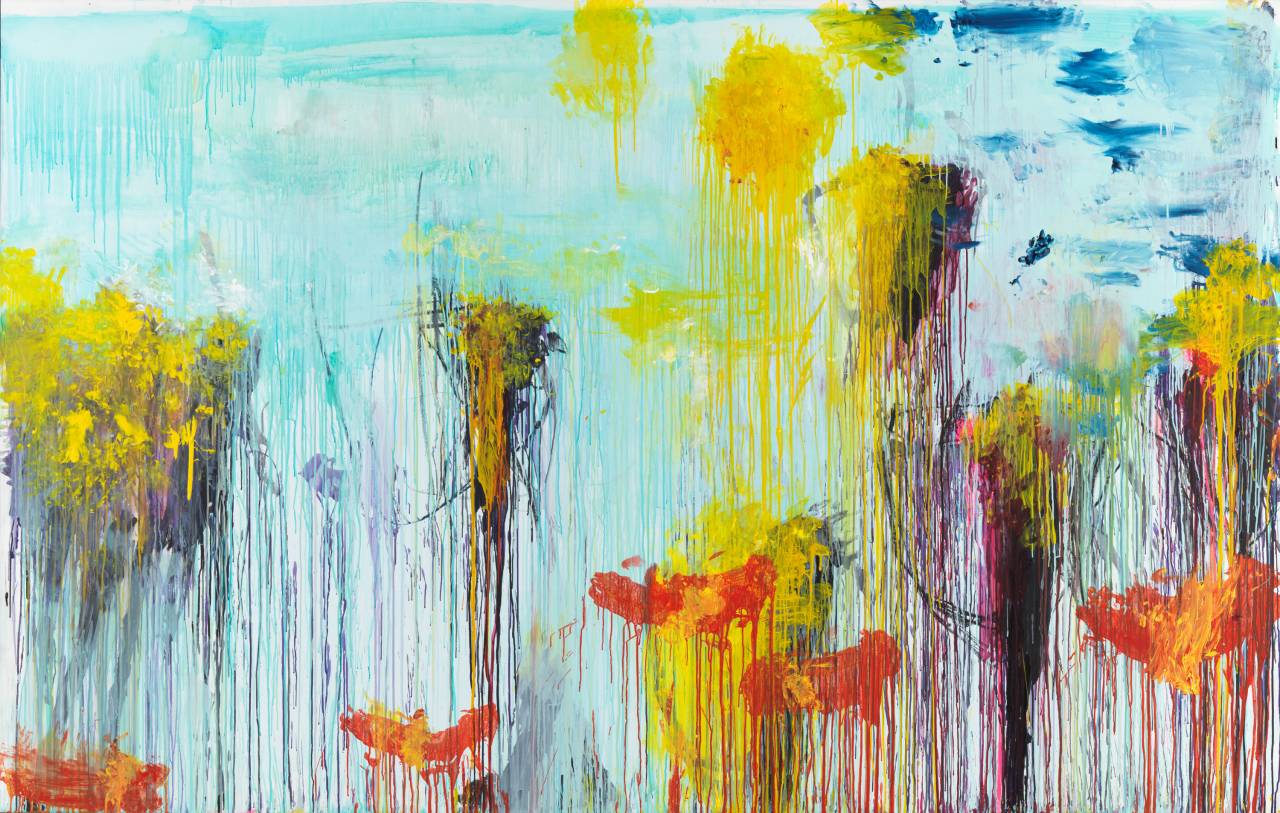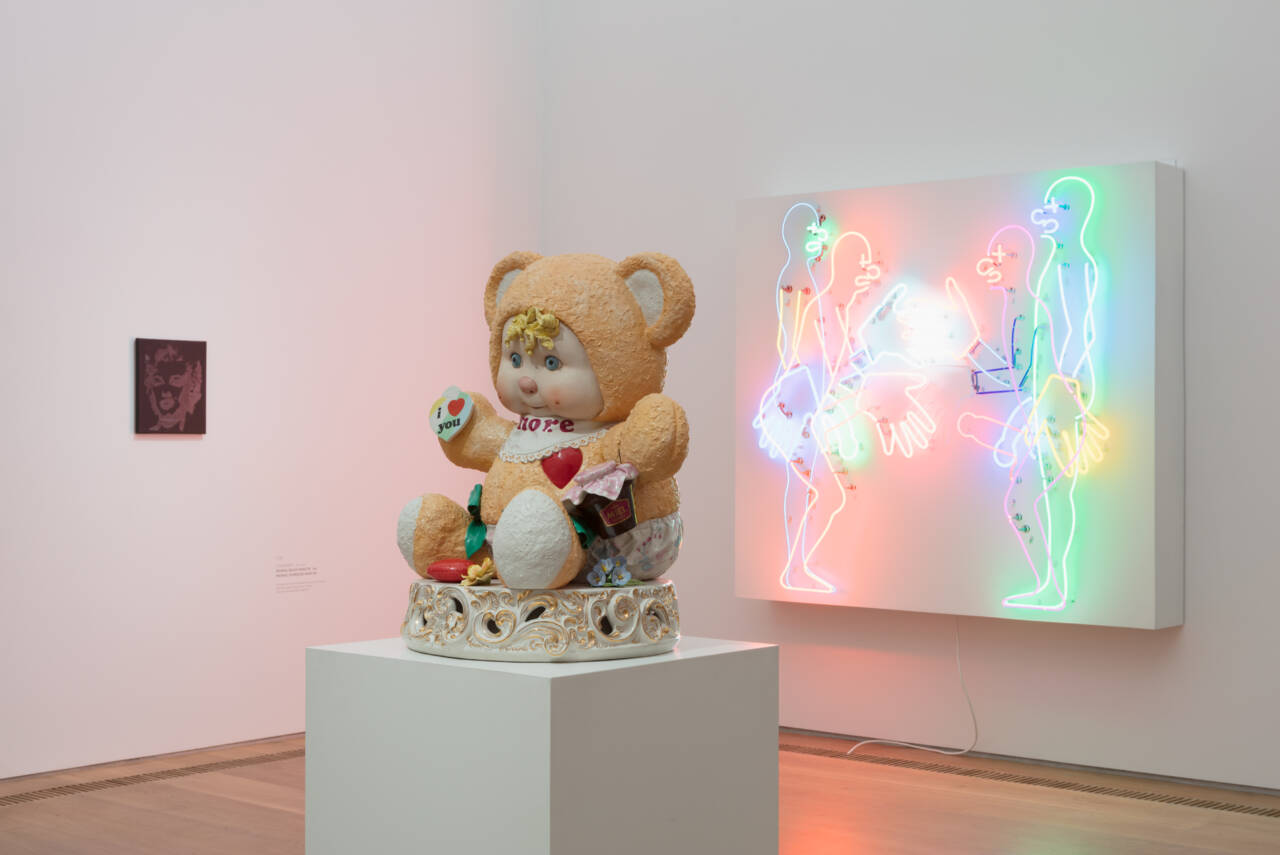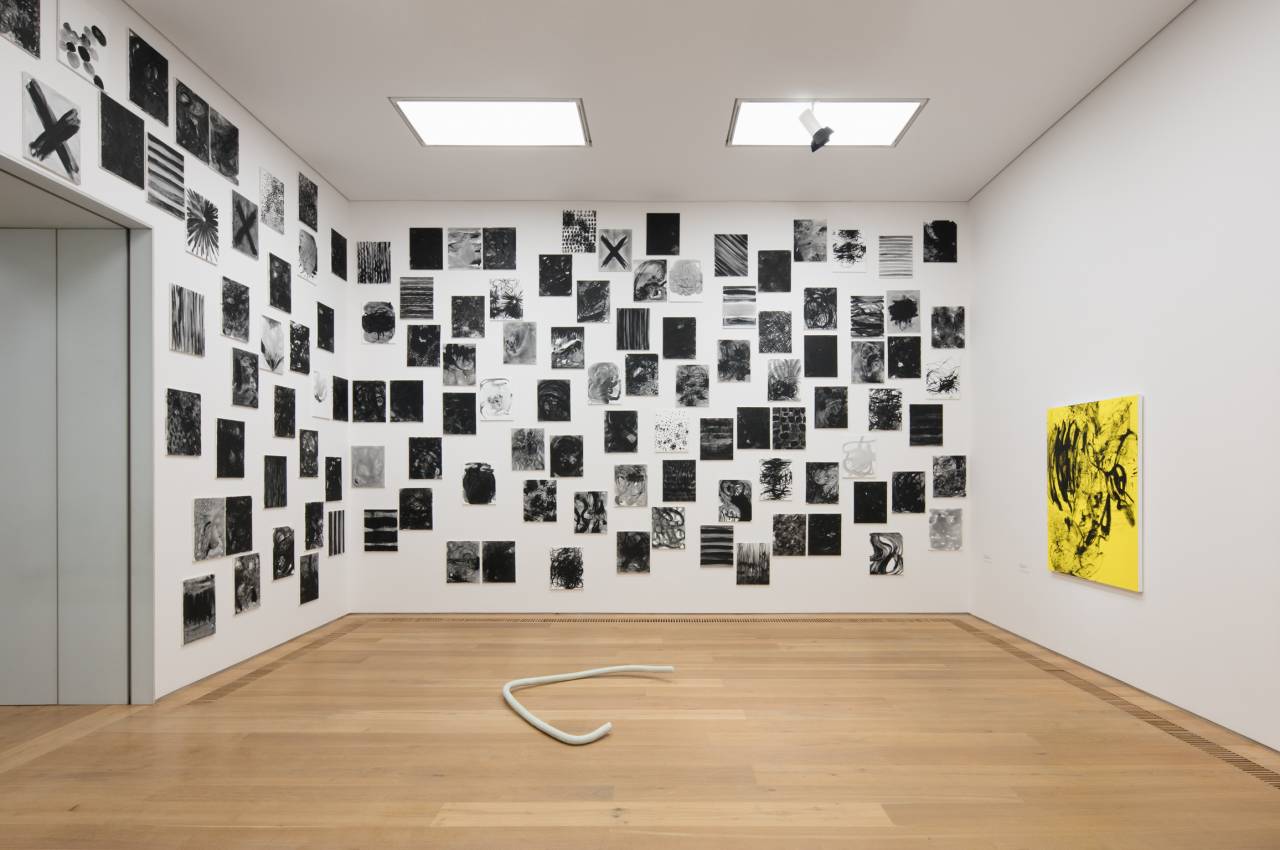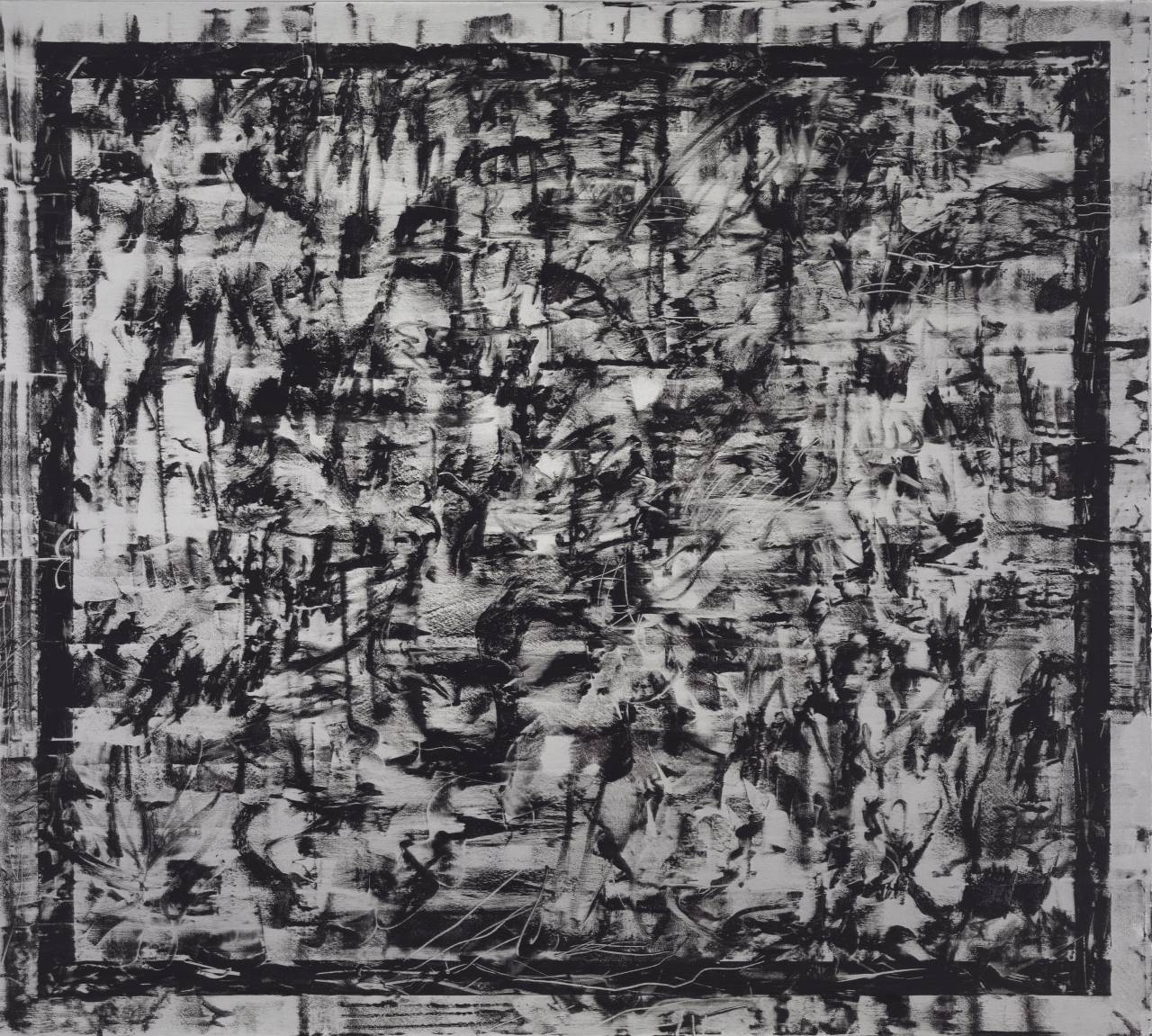Jacqueline Humphries: “I am painting last paintings all the time”
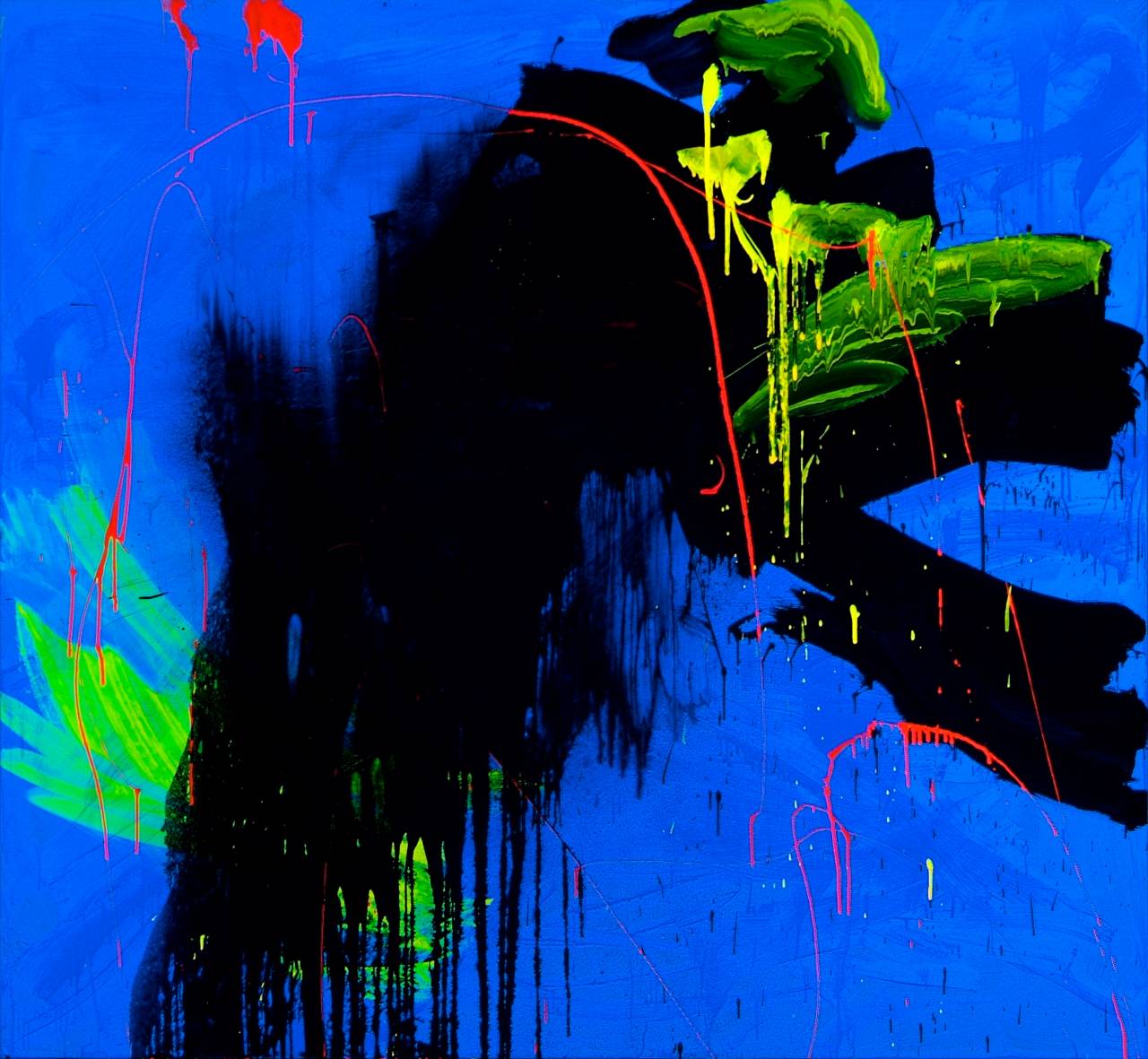
Introducing text
Jacqueline Humphries about fluorescent colors, and black light, on communication technology, screens, last paintings, and humor.
In conversation with Dominikus Müller
Interview
Jacqueline Humphries, how did you decide to become an abstract painter? It’s a decision that sounds—forgive me to frame it like that—quite “abstract” to me.
Well…I mean, all this started a really long time ago. You know, in art school they put you in a room with a model and tell you to draw this model. I’ve done a lot of paintings of my family and people I knew before, but suddenly I was supposed to draw a body that I didn’t know. That didn’t make any sense to me. There was a lot of abstraction around at this time in New York, the post-minimalist painters, people like Brice Marden or Richard Serra, so this seemed to be the way to go. I wasn’t really entirely comfortable with painting “things” anyway. But…the real answer to your question is: I don’t remember—it’s just too long ago. Isn’t it usually like that: You just start doing something and then you try to keep it up by finding new reasons to go on? That’s the real challenge!
Okay, let’s not talk about where it all started then, but where to take it from there. How do you keep going?
Typically, I work in big groups of works which are concerned with a specific issue; I work through these and “paint my way out” of them. And then I wait around for another boat to pass. Quite simple. Another thing that keeps me going in a more general sense: In painting discourse you have this idea of the “endgame”—that you always try to make the last painting in a way, the definitive one; one that distills everything that painting was up until that very moment, in a simple and compelling composition. And I like the fact that those “last paintings” are continuously generating new last paintings. So I am painting last paintings all the time.
Your Black Light Paintings, which are on view in “Forever Young” at Museum Brandhorst, use fluorescent paints and are only visible under black light conditions. Are you also painting them in the dark?
Yes, I do paint in the dark, which is a strange thing to do. But you get used to it. As more and more fluorescent paint is applied to the canvas, the room becomes brighter. What you then see is indeed kind of a surprise. These fluorescent paints are not generally used to make gestural abstraction, but rather in a night club or so. The idea for these paintings came after seeing the famous Rothko Chapel in Houston, which I really love. My thought was: What would these paintings look like if this would be a night club, not a chapel? But I was also trying to solve a basic problem: How to get someone even to look at a painting? Using fluorescent paint seemed like a good gimmick.
I also understood your Black Light Paintings as some sort of x-ray versions of Abstract Expressionism.
Definitely. I wanted to counter pose the revered high-art quality of Abstract Expressionism. So I combined an Ab Ex vocabulary with paints that come out of military and pop culture and that really hadn’t been used in a fine art context, because they were deemed not appropriate and “low.” So I was smashing two things together that didn’t belong together—and forced them to become a different thing altogether. I didn’t want to make abstract expressionist paintings; I was trying to use the tropes of Ab Ex to rearticulate the relationship of the painter to the viewer.
How important are current technological conditions for your work, our screen-based way of relating the world for example? And where does abstract painting stand in regard to all this?
Much of the work I’ve been doing for the last few years just came out of sitting in my studio staring at my phone—procrastinating, texting, writing emails. And I was thinking: I spent all these years in New York City, making friends, making paintings; and all I got, was this stupid keyboard!? All these relationships I had have been reduced to my interactions with a keyboard. So I started incorporating Emoji’s into some of my paintings and thus tried to re-approach abstraction from the point of communication. You know, it’s such a great thing! I can make a painting and give it an emotion just by using a certain emoji. The paintings now come with their own emotion.
Which paintings to you look at yourself, at the moment?
I keep coming back to Manet. I think he’s really the reason I became a painter. I am almost obsessed with the last paintings he made—the last ones, again—poignant, beautiful and simple little paintings of flowers. He was dying and the friends that came visiting him brought along all these flower bouquets. So he painted those. But even if they only show flowers, they are infused with the urban atmosphere of Paris at that time. At least they seem to be for me. How can a little bouquet of violets evoke all that— Paris, the industrialization, the bourgeoisie? I keep looking at them, because they restore my faith in painting.
Do you have to have humor to be a good abstract painter?
Of course, there has to be enjoyment in what you do. Abstract painting allows for an overflow of my cynical side. I also think that the Black Light Paintings are ridiculous in a way – at least I hope they are! I can take that feeling and point it back at myself: an “abstract painter,” making “giant abstract paintings!” Come on! Especially lately, I feel a lot of self-mockery in my work. Maybe it has to do with getting older. It is just absurd to keep going this way, it really is! In the end, there is something very comical in doing something nobody asked for.

